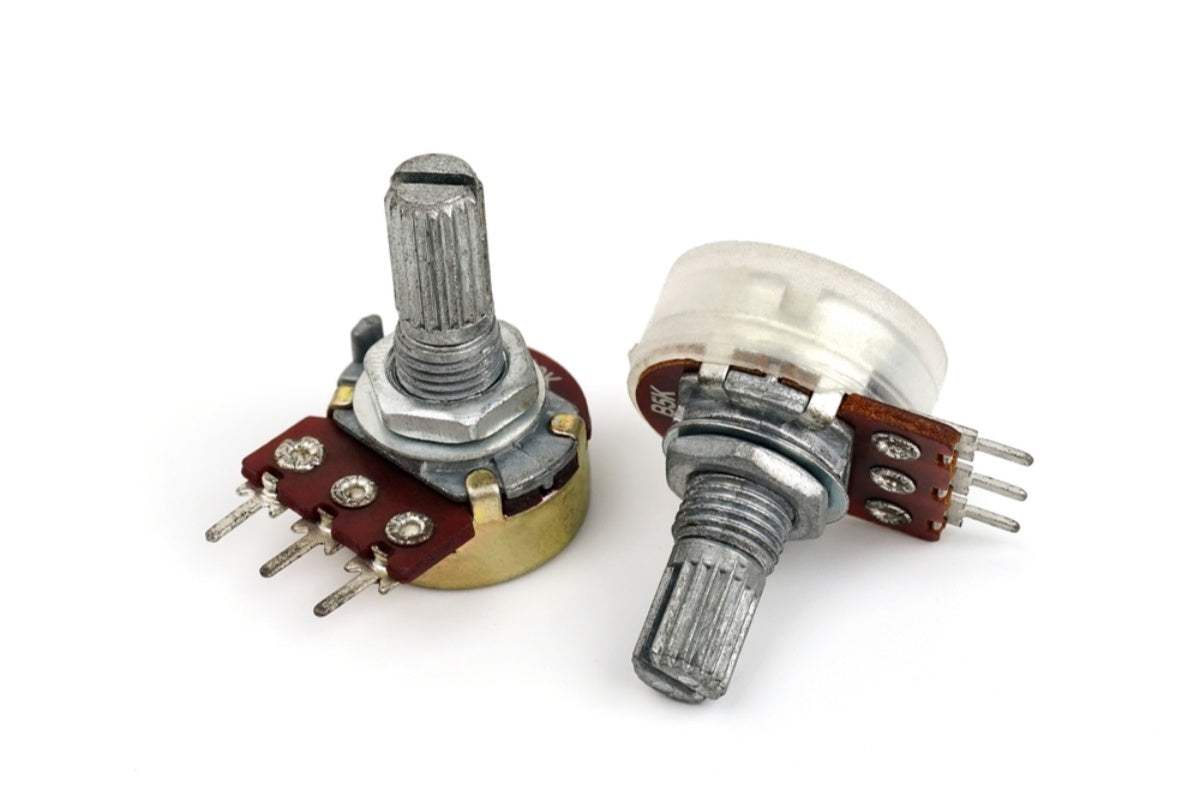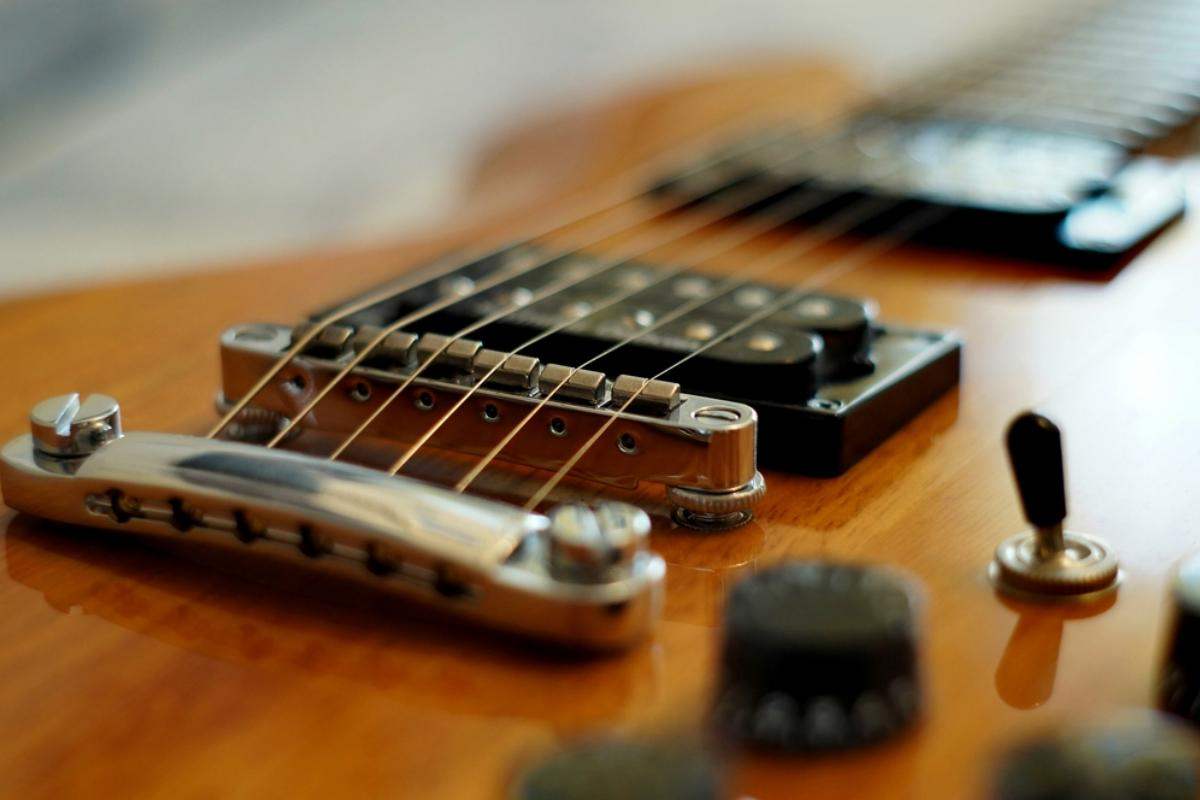When you decide to choose to buy electric guitar bridges, a lot of terms show up, such as electric guitar bridges, saddles and tailpieces. Let's sort these terms out together and get your puzzles clear!
Bridges
Your electric guitar bridge is one of the most critical elements in terms of the tone of your instrument. This is because it is where the strings connect to the body of the guitar, it therefore determines how much string vibration is transferred to the body.
There are different common types of guitar bridges - Fixed and Vibrato. Fixed (non-vibrato) bridges have a greater contact area with the body of the guitar allowing more transfer of string vibrations. This usually (but not always) gives them a more rounded, deeper sound.
Vibrato bridges are usually attached through screws or posts that are threaded into the body, therefore the amount of string vibration transferred is far less than with a fixed bridge. They usually have a block of metal underneath their base plate called a sustain block or an inertia block. This filters the string vibration before it is passed on to the body.

Saddles
Electric guitar saddles are the adjustable metal pieces between the strings and the bridge. Most guitars have six to match the number of strings, but some, such as older and re-issue Telecasters have three with two pairs of strings sharing one saddle. Obviously, seven, eight, etc. string guitars have more.
Saddles are designed to transfer string vibrations to the bridge and then into the guitar'sguitars top wood. The amount of downward pressure applied by the strings to the saddles will influence both tone and sustain, with a higher string pressure resulting in more sustain.
The materials used in its construction or even the shape of the saddle will have an effect on your guitarguitars string vibration, sustain, intonation, and timbre. However, many budget guitar manufacturers use lower-quality materials for their saddles so upgrading to a quality set that will fit perfectly onto your current bridge is an affordable and highly effective way to improve your guitar'sguitars tone, playability, and harmonic content.

If you have a Fender, Squier, or other strat type guitar the Brass-roller 6ps 10.8/10.5MM Bridge Saddles Electric Guitar isare an excellent choice, or for saddle-sharing Telecasters, go for the 3 pcs In-Tune Guitar Bridge Saddles Brass Material Well 10.8 mm String Spacing.
Tailpieces
What is a Guitar Tailpiece?
A guitar tailpiece is the part of your guitar that anchors the end of the strings on or in the guitar body, with the other end anchored by the tuning machines on the headstock.
Most Fender and Squier style electric guitars normally have the tailpiece built into the back of the bridge, so it is not visible when you look at the front of the guitar. However, if you remove the backplate, you will see it.
While most Gibson, Ephiphone, Gretch, etc. electric guitars have a stop tailpiece that is positioned behind the bridge on the body of the guitar. This is the same for most semi-acoustic guitars and full hollow-bodied archtops which may feature an archtop tailpiece or trapeze tailpiece.

How to get the most sustain from your guitar by correctly adjusting the Stop Tailpiece
Many guitarists get confused about the best way to set the height adjustment of the stop tailpiece. Numerous players think that the tailpiece should be screwed all the way down or the guitar will not sustain as much as it should. But if that were the case, why would the manufacturers make the tailpiece adjustable?
It is also commonly thought that the best tone is achieved by using a ‘top wrap style’ when installing the strings. This has been popularized by players such as Jimmy Page who wrapped his strings in this way to get a more gradual string angle between the saddles on the bridge and tailpiece, which helps the guitar stay in tune and lessens the chance of string breaks. However, if he had simply raised the height of his Les Paul tailpiece, he would have achieved exactly the same thing.
However, if you take the tailpiece too high, then the pressure being pushed down on the bridge will not be strong enough to get the tone you are looking for, or even keep the strings on the saddles in extreme cases. Whereas, if the tailpiece is too low, the string angle will be very steep and the strings could even end up touching the back of the bridge nearest to the tailpiece. This creates extra friction on the strings which will affect your tuning stability and could lead to you breaking a lot more strings.
The force exerted on the strings by the tailpiece is about 60 kg if you are using standard 10-46 gauge strings. With that amount of pressure, any quality instrument will have no issues if the tailpiece is all the way down or all the way up, the guitars construction is more than strong enough. Therefore, the best way to get the tone you want is to adjust the bridge to the perfect height as opposed to leaving it ‘stuck’ to the body and top wrapping the strings around it. Therefore, experiment with the height of the tailpiece until you get the tone you are looking for and have no issues with broken strings or tuning stability.
However, if you do like the super-cool look of screwing the studs all the way down and top-wrapping the strings in the style of the mighty Jimmy Page, go for it! It worked for the master, so it will probably work fine for you as well.
Wrapping it Up
There you have it, everything you need to know about bridges, saddles, and tailpieces. If you would like to know what to consider about guitar bridges and how to change your new guitar bridge on the guitar what would be a great upgrade for your guitar, please read on.
If you like this article, please share it!
Be sure to join our FB Group Guyker Guitar Parts & Accessories Community to share your ideas! You can also have connections with like-minded guitar players, Guyker updates as well as discounts information from our FB Group.





